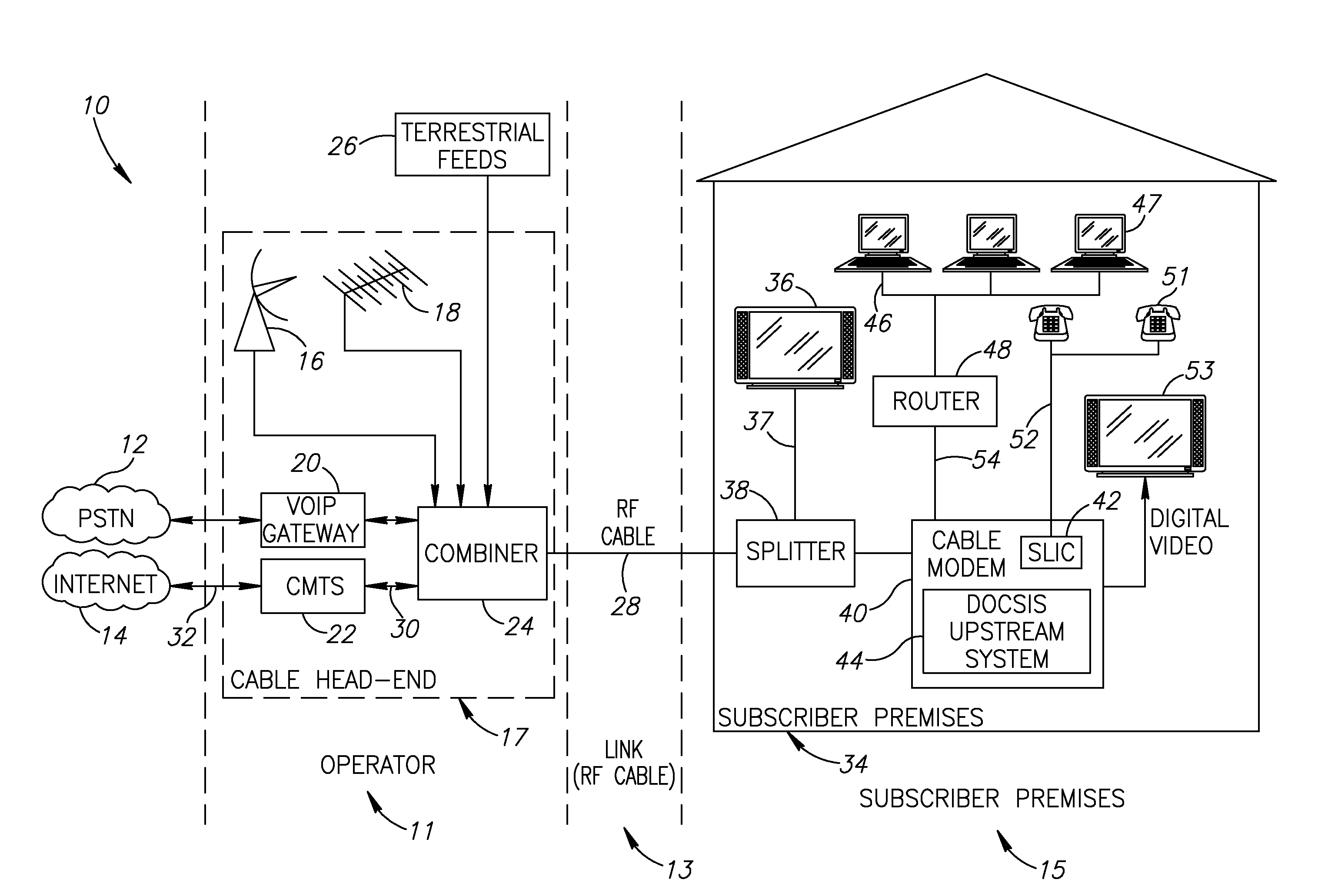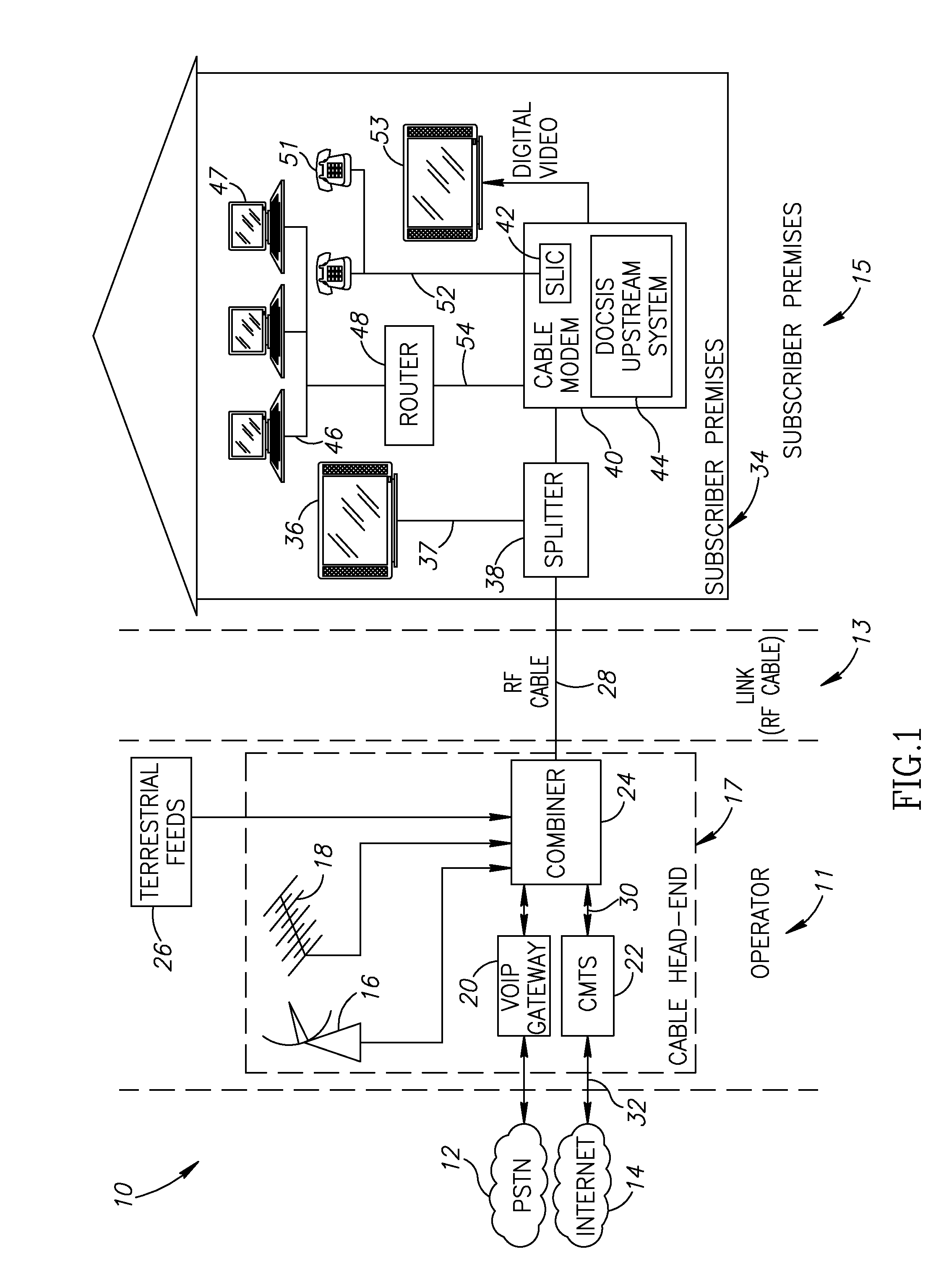Passive circuit for improved differential amplifier common mode rejection
a technology of differential amplifier and common mode rejection, which is applied in the field of electric circuits, can solve the problem of sufficiently high impedance of the industry
- Summary
- Abstract
- Description
- Claims
- Application Information
AI Technical Summary
Benefits of technology
Problems solved by technology
Method used
Image
Examples
Embodiment Construction
Notation Used Throughout
[0030]The following notation is used throughout this document.
TermDefinitionACAlternating CurrentADCAnalog to Digital ConverterASICApplication Specific Integrated CircuitATMAsynchronous Transfer ModeCATVCommunity Antenna Television or Cable TVCMCable ModemCMRCommon Mode RejectionCMRRCommon Mode Rejection RatioCMTSCable Modem Termination SystemCOCentral OfficeCPUCentral Processing UnitDACDigital to Analog ConverterDCDirect CurrentDCASDownloadable Conditional Access SystemsDECTDigital Enhanced Cordless TelecommunicationsDHCPDynamic Host Control ProtocolDOCSISData Over Cable Service Interface SpecificationDSDownstreamDSLDigital Subscriber LineDSPDigital Signal ProcessorDVRDigital Video RecorderEEROMElectrically Erasable Read Only MemoryFPGAField Programmable Gate ArrayGPIOGeneral Purpose I / OHDLHardware Description LanguageI / FInterfaceI / OInput / OutputICIntegrated CircuitIPInternet ProtocolIRFImage Reject FilterLANLocal Area NetworkLEDLight Emitting DiodeLPFLow Pas...
PUM
 Login to View More
Login to View More Abstract
Description
Claims
Application Information
 Login to View More
Login to View More - R&D
- Intellectual Property
- Life Sciences
- Materials
- Tech Scout
- Unparalleled Data Quality
- Higher Quality Content
- 60% Fewer Hallucinations
Browse by: Latest US Patents, China's latest patents, Technical Efficacy Thesaurus, Application Domain, Technology Topic, Popular Technical Reports.
© 2025 PatSnap. All rights reserved.Legal|Privacy policy|Modern Slavery Act Transparency Statement|Sitemap|About US| Contact US: help@patsnap.com



